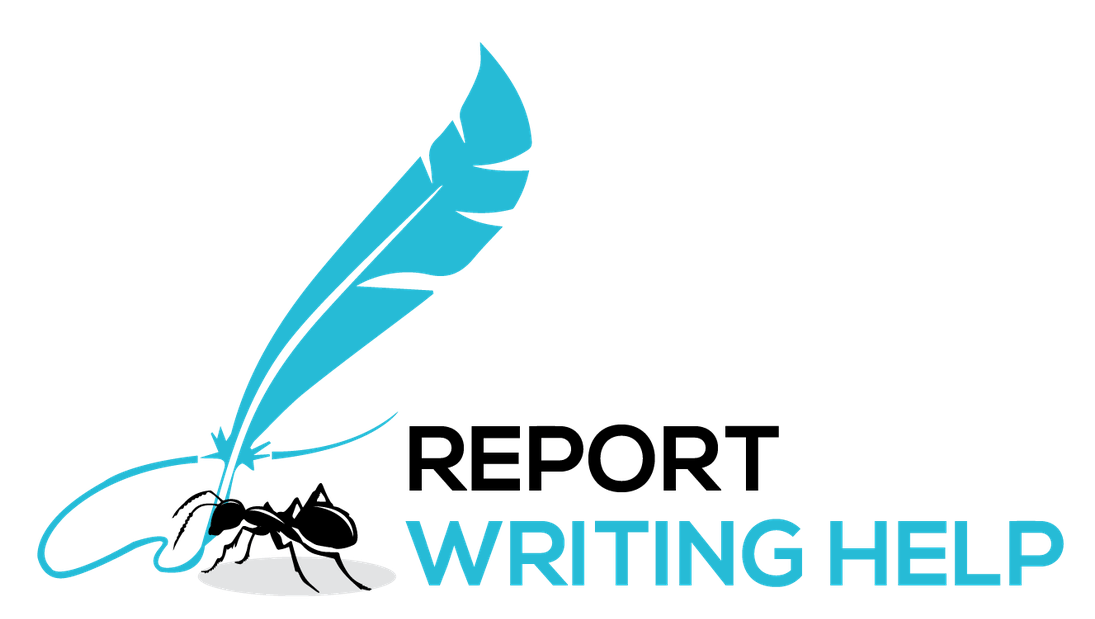The Ultimate Guide to Technical Report Writing and Structuring

Are you tangled up in a web of jargon, diagrams, and data, unable to find your way through structuring your technical report? You’re not alone! It’s like navigating a dense jungle of complex terms and data points without a proper map—intimidating, stress-inducing & incredibly frustrating. Even the mere sight of a blank page or a messy draft can make you want to pull all your hair out. But wait, what if we tell you that with the right approach, you’ll soon find yourself tackling technical reports with confidence and finesse?
Yeah, you read it right. That’s why we’re here to be your trusty guide, transforming that confusion into clarity and making that tough job easy to handle. We’ll break down the challenging world of technical report writing into simple, digestible steps. From understanding the basic structure to crafting engaging introductions and conclusions—we'll handle everything. By the end, you'll have the skills to create a report that’s not only informative but also captivating and student-friendly. So, buckle up, grab your favourite snack, and let’s turn you from zero to hero in no time.
Why Technical Reports Matter?

Why are technical reports so important, and why should you care? Well, they’re a fundamental part of academic and professional life. They show that you can take something complicated and make it accessible to various audiences, whether they are experts in the field or stakeholders with limited technical knowledge. This skill is invaluable in the real world, where clear communication can make the difference between a successful project and a failed one.
Basically, it’s more than just a structured communication tool that helps you convey your main points—it’s a bridge between complex data and human understanding:
- Data Translation: A technical report isn’t merely a summary; it’s a meticulous process of translating detailed data into actionable insights. You’re not just reporting facts; you’re making those facts meaningful and understandable.
- Structured Insight: Think of it as creating a roadmap from raw data to clear conclusions. Each section of the report is crafted to guide the reader seamlessly through your analysis, making the jumbled mess of information digestible.
- Evidence-Based Recommendations: Your report provides outcome-focused suggestions, and supports logical conclusions and practical actions that help the authority make informed decisions.
In essence, technical reports are not just assignments to be completed; they’re opportunities to showcase your expertise, critical thinking, & excellent communication skills – giving you the edge. By honing your report writing skills, you are investing in your future success, ensuring that you can stand out in both academic and professional settings.
Understanding the Basics: What is a Technical Report?

Have you ever wondered what makes a technical report different from all other types of reports? Let’s get one thing straight: a technical report isn’t just a fancy term for a long, boring document. Think of it like a detective story. It presents a problem, investigates it and highlights the findings in a way that's both informative and engaging. Each piece of data you find helps complete the bigger picture. The only difference here is that instead of catching criminals, you’re unravelling the problems that your report addresses
Unlike other reports, it requires a high level of detail, precision, and clarity. Why? Well, because:
- Companies and organisations rely on well-crafted technical reports to drive innovation, improve processes, and achieve strategic goals.
- These reports serve as a basis for planning, implementing, and evaluating projects.
- Moreover, they provide crucial insights that inform decision-making and future strategies, making them indispensable in educational corporate environments.
Here are the Key Elements of a Technical Report:
- Title Page: Your first impression matters! Include the title, your name, date, and any relevant affiliations. Avoid overly complex or lengthy technical report writing topics; keep it simple but informative.
- Abstract: This is a condensed version of your report. It’s like a movie trailer, giving readers a taste of what's to come. You’ve 30 seconds to convince your audience to read your entire report so make it worth it. Aim for around 150-200 words max.
- Table of Contents: Helps readers navigate your report with ease. It should list all headings and subheadings with corresponding page numbers. Keep it clear and easy to follow.
- Introduction: Sets the stage for your report. Explain the purpose, scope, objectives and any necessary background information. Think of it as the opening scene of a movie – hook your audience!
- Methodology: This section is your lab coat moment. Describe the methods, procedures, and data collection techniques you used. Be detailed and transparent about your research process.
- Results: The heart of your report. Present your findings clearly and objectively. Use tables, graphs, and charts to visualise your data. Remember, data doesn't lie, it can be boring if not presented well.
- Discussions: Analyse your results, interpret their significance, and draw conclusions. What do they mean? How do they relate to your research question? This is where you shine as a critical thinker.
- Conclusion: Summarise your findings and provide recommendations. Avoid introducing new information here.
- References: Cite your sources to give where credit is due and enhance your report's credibility.
- Appendices: Include any supplementary material that is too detailed for the main body of the report.
Crafting a Compelling Introduction:
The introduction of your technical report sets the tone for the entire document. It should grab the reader's attention and provide a clear roadmap of what to expect. A well-crafted introduction is like a first impression – it can make or break the reader's interest. So, how do you make it compelling and engaging? Let’s break it down.
Writing an Engaging Introduction
- Start with a Hook: Use a fascinating fact, an engaging question, a powerful quote, or a brief story related to your topic.
- Provide Background Information: Give context to your research. Why is this topic important?
- State the Purpose: Clearly outline the objectives of your report. What do you aim to achieve?
- Outline the Structure: Briefly mention the main sections of your report.
Example Introduction
Here’s a technical report example on renewable energy. An engaging introduction might start like this: “Did you know that by 2050, renewable energy could power nearly 80% of the world’s electricity? As the world grapples with climate change, understanding renewable energy technologies is more crucial than ever. This report delves into the latest advancements in solar and wind energy, aiming to provide a comprehensive overview of their potential and challenges.”
Structuring the Body: Breaking Down Complex Information
The body is where you present your research, analysis, and findings. An effective technical report structure is key to maintaining clarity and coherence. It’s all about presenting your information in a logical, easy-to-follow manner that makes advanced data comprehensible.
Tips for Structuring the Body
- Use Headings and Subheadings: Break down the content into manageable sections. This makes it easier for readers to follow along.
- Include Visuals: Diagrams, charts, and tables can make detailed information more graspable.
- Be Consistent: Use a consistent format for headings, subheadings, and numbering.
- Explain Technical Terms: Don’t assume all readers will understand jargon. Provide explanations where necessary.
- Stay Objective: Present data and analysis without bias. Let the facts speak for themselves.
Example Structure
For a report on renewable energy, the body might be divided into sections like:
- Overview of Renewable Energy Sources
- Advancements in Solar Technology
- Wind Energy Innovations
- Comparative Analysis of Efficiency
- Economic and Environmental Impacts
Writing a Strong Conclusion:
Why is the conclusion your last chance to make a lasting impression? The conclusion of your technical report should provide a clear summary of your findings and suggest possible next steps or recommendations. It’s your opportunity to reinforce the significance of your work and leave a memorable mark on your target audience.
Crafting an Effective Conclusion
- Summarise Main Points: Briefly recap the main findings of your report.
- Discuss Implications: What do your findings mean for the field? How can they be applied?
- Make Recommendations: Suggest practical applications or areas for further research.
- End with a Strong Statement: Leave your readers with a thought-provoking conclusion.
Example Conclusion
In a report on renewable energy, your conclusion might look like this: “In conclusion, renewable energy technologies hold immense potential for mitigating climate change and providing sustainable energy solutions. While solar and wind technologies have made significant advancements, continued research and investment are essential. Embracing these technologies can lead to a cleaner, greener future.”
The Role of Visuals: Enhancing Understanding
How do visuals make your technical report more effective? Visual aids like charts, graphs, and diagrams can enhance understanding and retention of complicated information. They provide a visual representation of data, making it easier to grasp and turning a text-heavy report into an engaging, reader-friendly document.
Using Visuals Effectively
- Choose the Right Type of Visual: Use charts for comparisons, graphs for trends, and diagrams for processes.
- Keep It Simple: Avoid clutter. Use visuals strategically to enhance your message. Ensure they’re distinct and easy to understand.
- Label Clearly: Provide clear labels and captions for all visuals.
- Integrate with Text: Refer to visuals in the text and explain their significance.
Example Visuals
For a renewable energy report, you might include:
- Pie Chart: Showing the percentage of global energy from renewable sources.
- Line Graph: Illustrating the growth of solar energy capacity over time.
- Flowchart: Detailing the process of wind energy generation.
Proofreading and Editing: Polishing Your Work
Why is proofreading the final step you should never skip? Proofreading and editing are crucial to ensure your report is error-free and flows smoothly. Even the best content can be undermined by typos and grammatical mistakes. This final step ensures your report is polished to perfection.
Tips for Proofreading and Editing
- Take a Break: Step away from your report for a while before reviewing it. Fresh eyes catch mistakes better.
- Read Aloud: This helps identify awkward phrasing and run-on sentences.
- Use Tools: Utilise grammar and spell-check tools, but don’t rely solely on them.
- Get Feedback: Have someone else review your report. Ask a friend or colleague to review your report. A different perspective can highlight issues you missed.
Final Checklist
- Check for consistency in formatting and style.
- Verify all references and citations.
- Ensure all visuals are correctly labelled and referenced.
- Confirm that the report meets all requirements and guidelines.
Final Takeaway
So, why stress over nothing? Writing a technical report might seem overwhelming, yet with a strategic method, it can be a rewarding experience. By following these online report writing help guidelines, you'll be well on your way to creating a well-put-together, informative, and impactful report. Remember, practice makes perfect, so don’t be afraid to tackle more such challenges in the future. So, stop googling for technical report writing examples for students online, put on your thinking cap, dive into your research, and let your writing shine!

